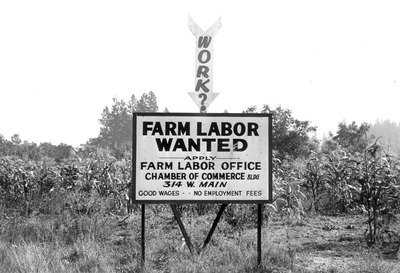Between 1940 and 1943, the number of farm workers in the United States noticeably decreased because of armed forces manpower requirements and competition with higher paying jobs in the defense industries. At the same time, farmers were asked to increase production as part of the successful prosecution of World War II. By 1943, the successful harvest of the nation's food supply was in jeopardy. On April 29, 1943, the 78th U.S. Congress approved Public Law 45, the Farm Labor Supply Appropriation Act, in order to "assist farmers in producing vital food by making labor available at the time and place it was most needed."
The state's agricultural extension services assumed responsibility for the emergency labor programs, primarily by coordinating and overseeing labor recruitment, training and placement. In Oregon, the Emergency Farm Labor Service was established by the Oregon State College Extension Service. Between 1943 and 1947, Oregon's Emergency Farm Labor Service assisted with over 900,000 placements on the state's farms, trained thousands of workers of all ages, and managed nine farm labor camps. Farm laborers included urban youth and women, soldiers, white collar professionals, displaced Japanese- Americans, returning war veterans, workers from other states, migrant workers from Mexico and Jamaica, and even German prisoners of war.
This exhibit is a tribute to everyone who was a part of this unparalleled wartime effort -- the farmers, Extension Service personnel, and, most of all, the emergency farm workers.

